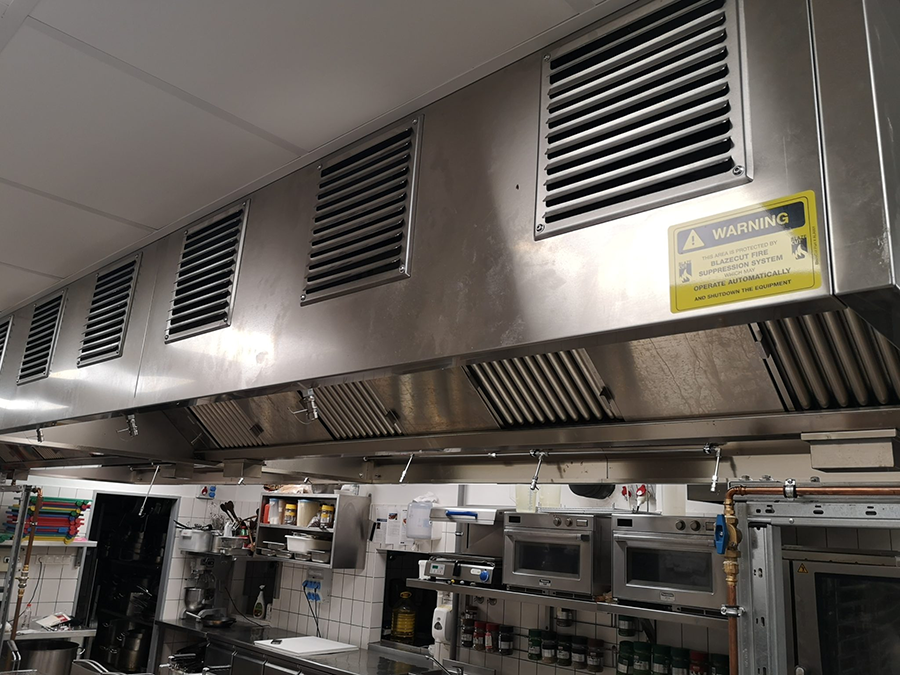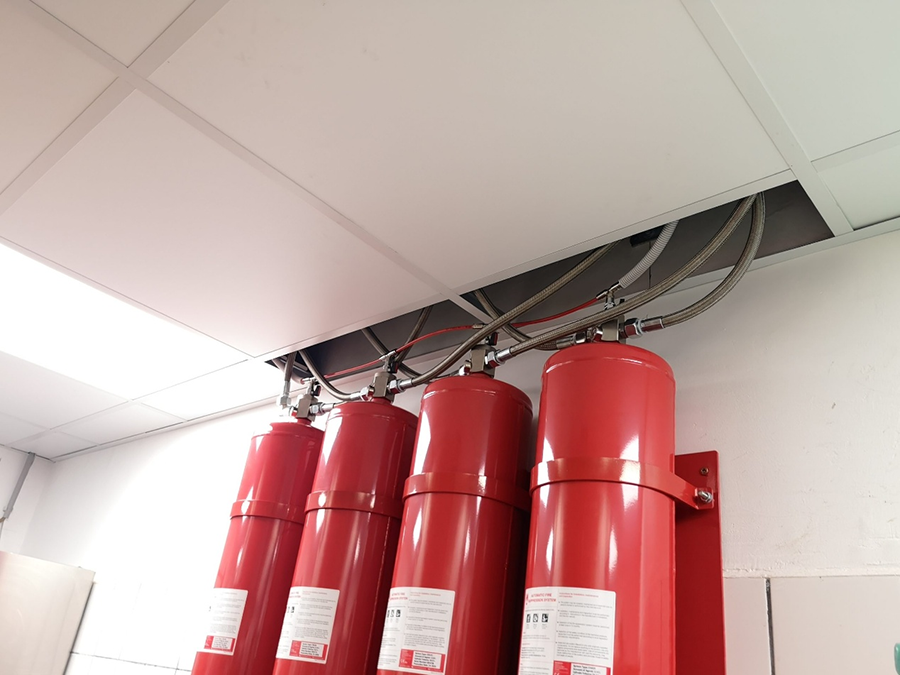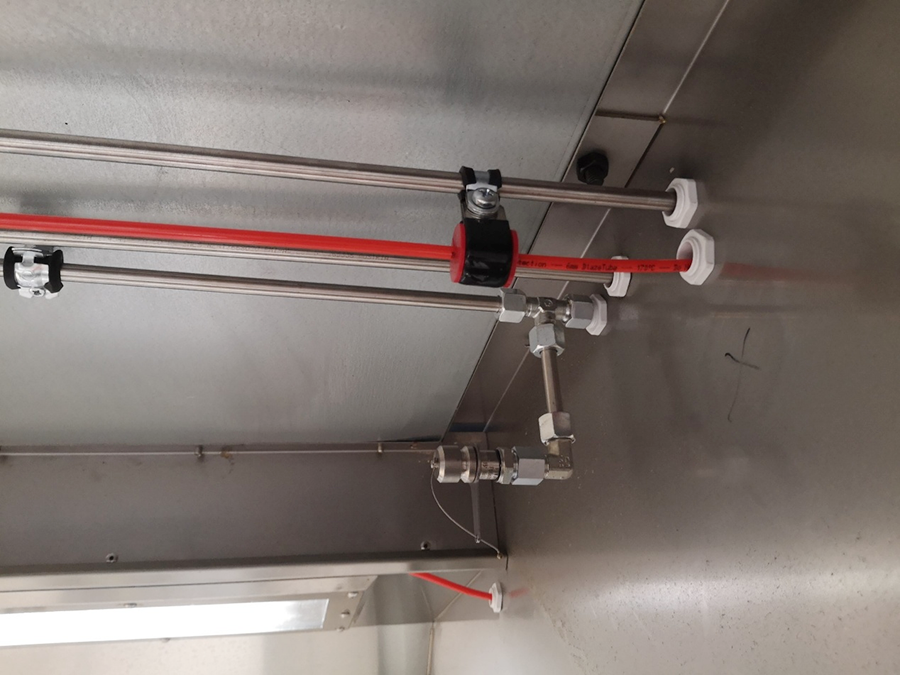
Risk Background
Commercial kitchens, whether canteens, restaurants, or hotels, present numerous fire hazards due to the natural environment of open flames, the numerous heat-generating appliances, and the use of flammable oils and fats. Neglected cleanliness, crowded spaces, a fast-paced service, and other factors increase the likelihood of fire incidents. Understanding these hazards and how to mitigate them can help prevent property damage, business downtime, and, more importantly, loss of life. Therefore, the use of a fire suppression system with an uninterruptible and independently powered supply is strongly recommended.
What We Did
Commercial kitchens often have limited space and limited space. Installing an explosion suppression system is challenging due to the distribution of appliances, cabinets, and plumbing. Careful initial design and preparation are essential. A water-based series system was installed for the commercial kitchen, consisting of multiple gas cylinders connected in series. The pneumatic connections and fire detection for the gas cylinders utilize thermally sensitive tubing that covers all kitchen equipment, exhaust hoods, and air ducts. Foam fire suppression agent distribution is accomplished using stainless steel pipes and braided hoses. Several kitchen-specific nozzles with 40° and 15° spray patterns provide coverage for potential fire hazards. For emergency activation of the fire suppression system, a remote pneumatic actuator and beacon/buzzer combination unit is installed at an easily accessible location near the galley exit.


